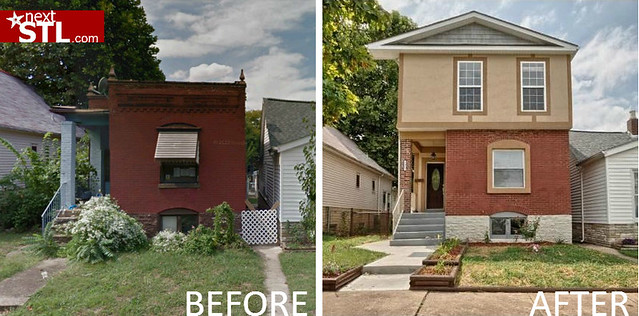
New ideas use old buildings. So said Jane Jacobs. This doesn't mean that every new idea is worthwhile, or a mark of progress, but adpative reuse of the historic built environment in many ways defines St. Louis. Warehouses to lofts, a gas station to brewery or coffee shop, a ballroom to movie theater, and lest we forget-shoe factory to insane playhouse — the defining places in St. Louis are often repurposed buildings. But while the 700 square foot loft has found success in the market, a similarly widespread revision eludes the 700 square foot historic brick bungalow. I engaged in a little hyperbole recently, Tweeting the image below and labeling it a tragedy – guess that depends on one's perspective. Anyway, other, shall we say, adaptations, of the brick bungalow are more substantial. The question is: do modifications such as the one above represent a progressive adaptation, a new model for reuse, or should they be seen as "crimes against urbanity" for striping detail of significant craftsmanship and adulterating a vernacular architecture form?


{rows of well-maintained brick bungalows can be found tucked away in the city}
Other creative transformations have been envisioned, including an open loft concept employing a portion of the first floor as a mezzanine and making full use on the basement space. The concept below was never executed, but similar additions to existing building envelopes may be another way to adapt these traditional structures to the modern market. Adaptive Reuse of the St. Louis Shotgun Home:



